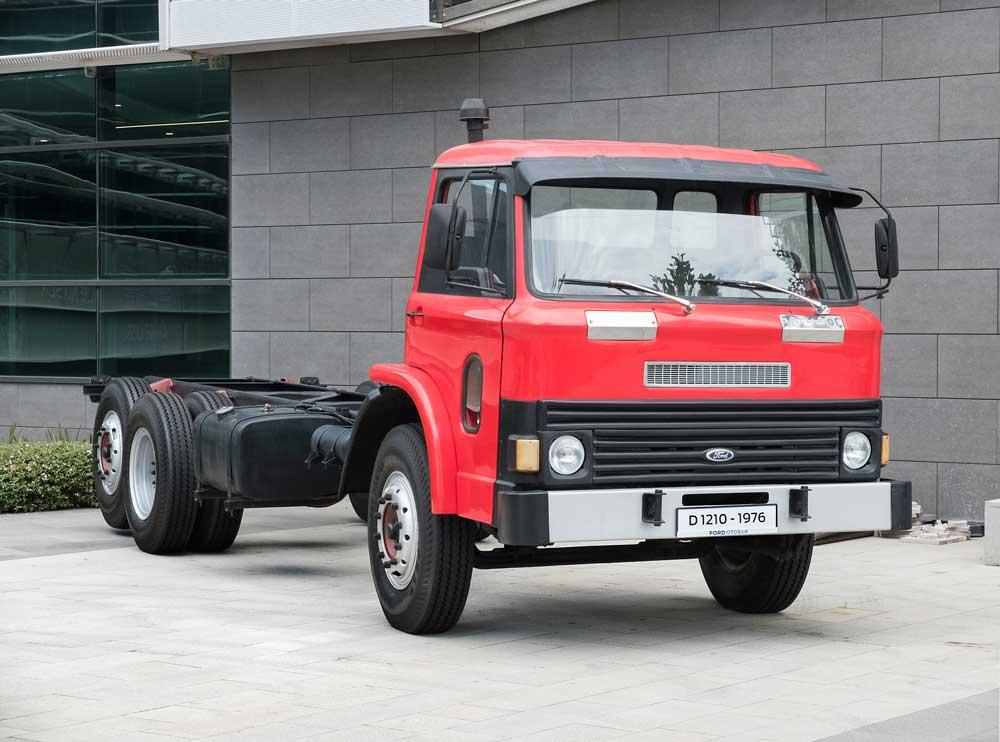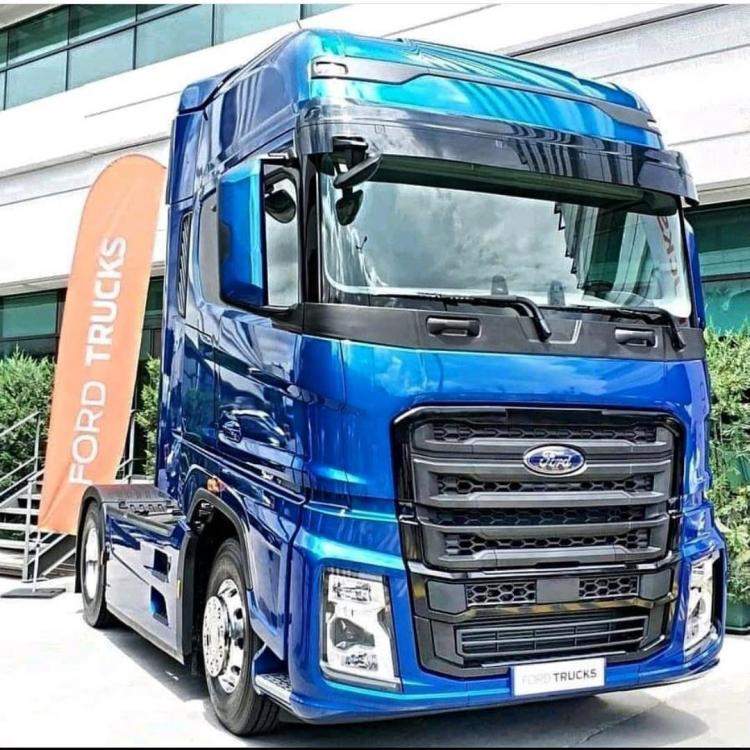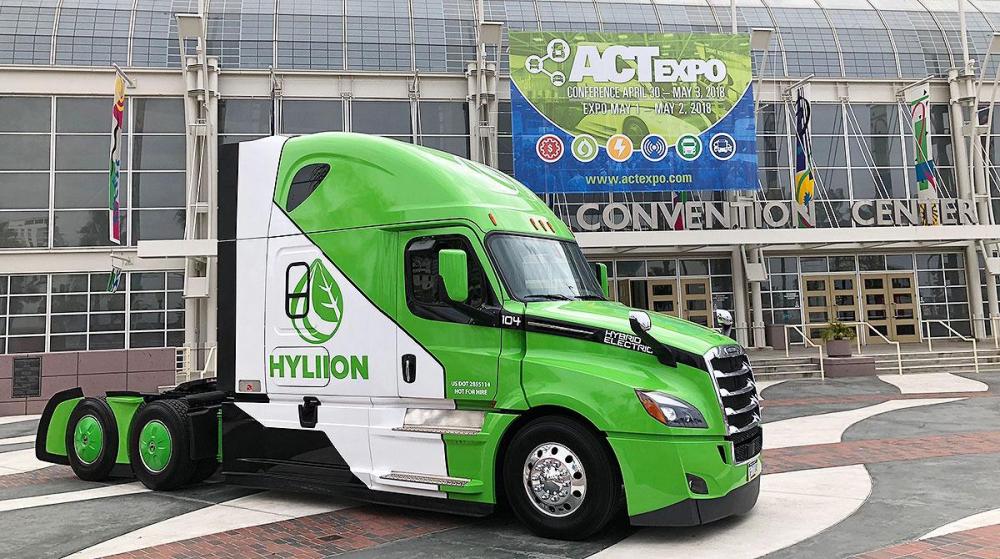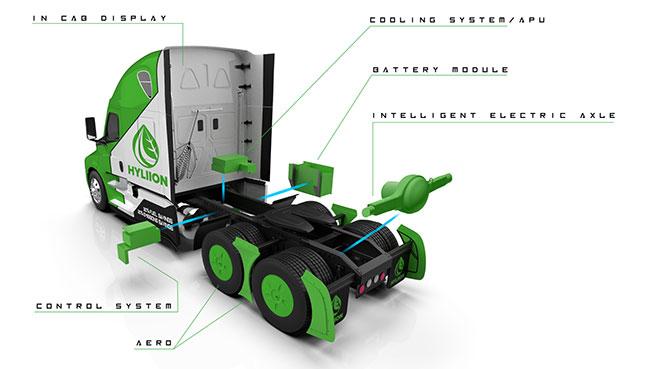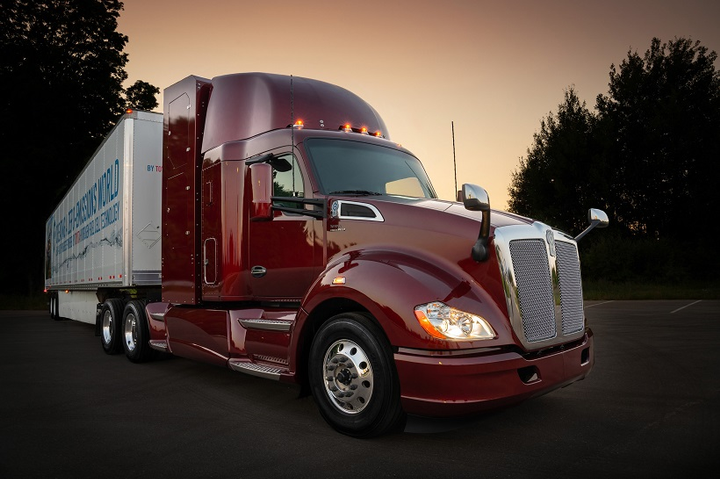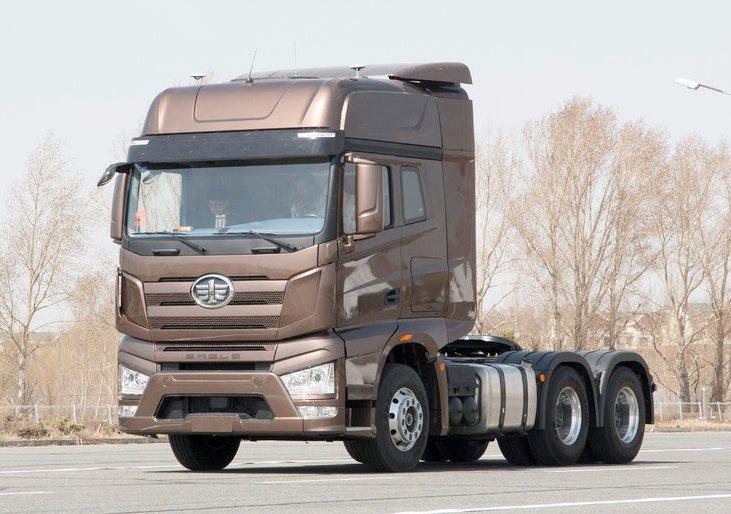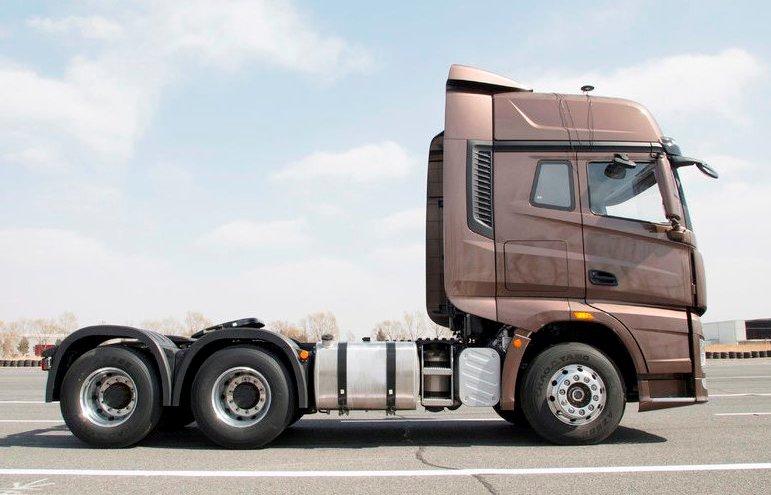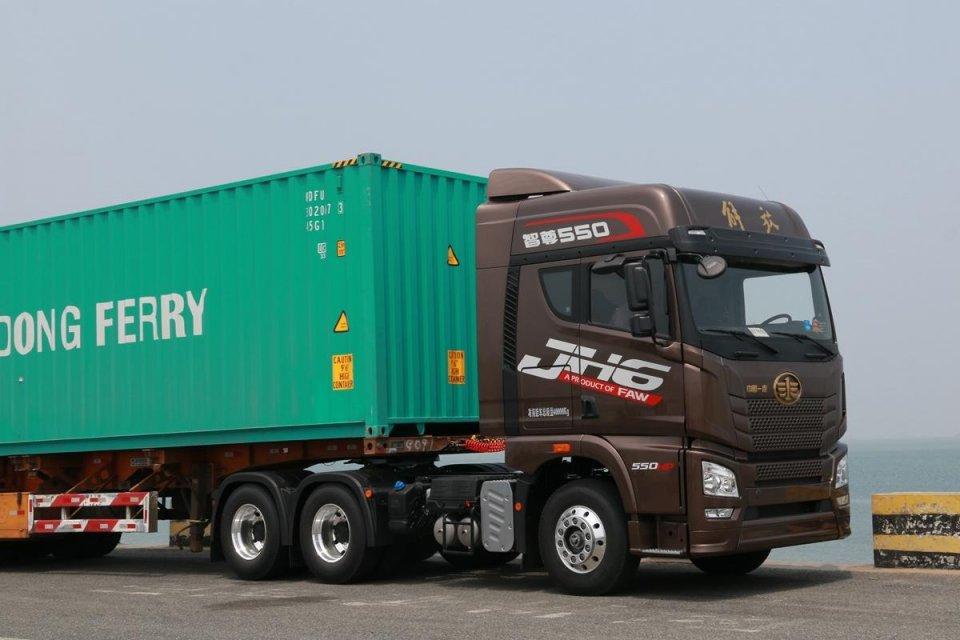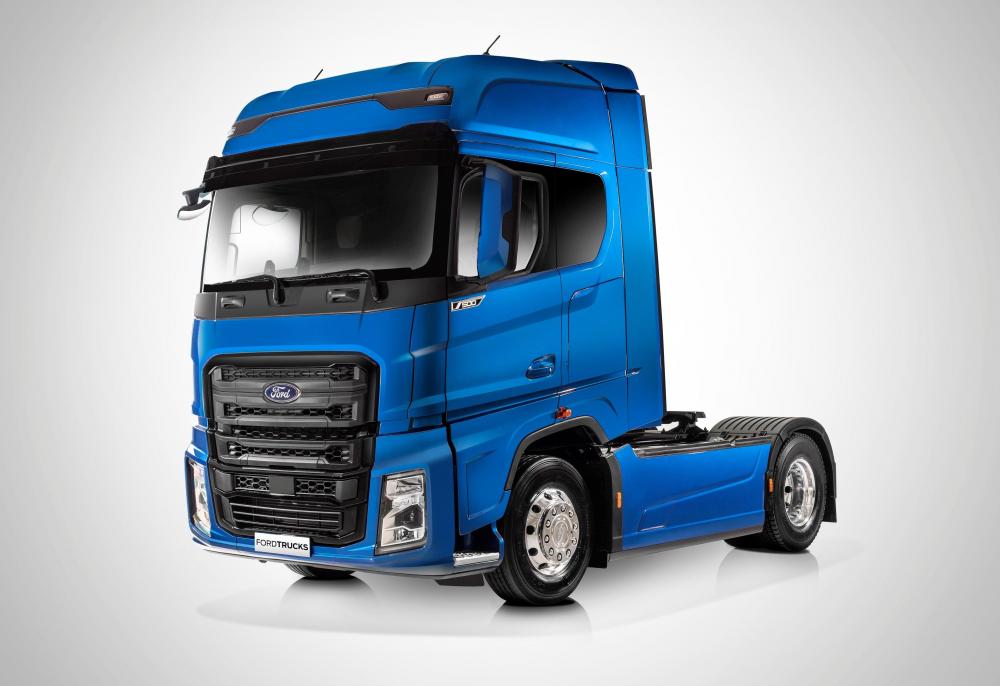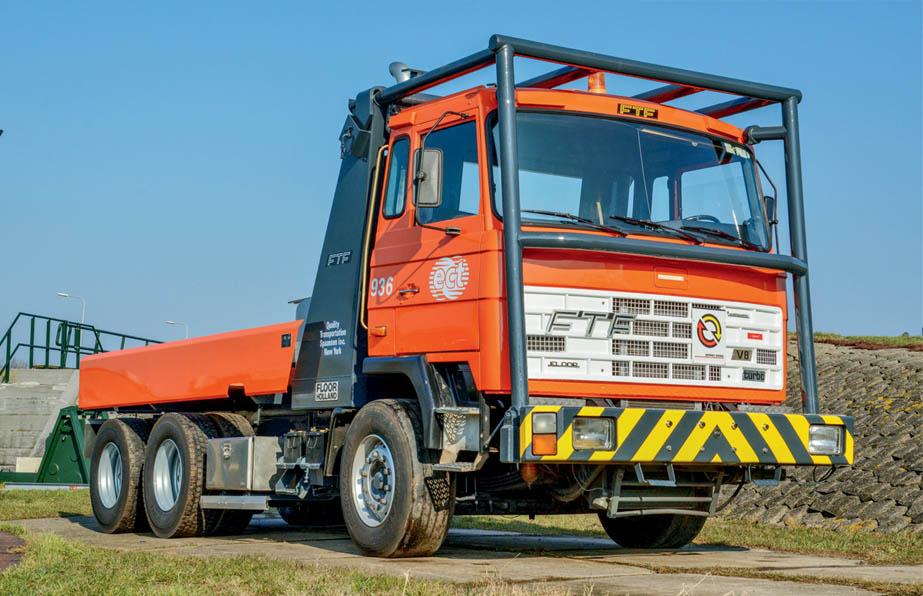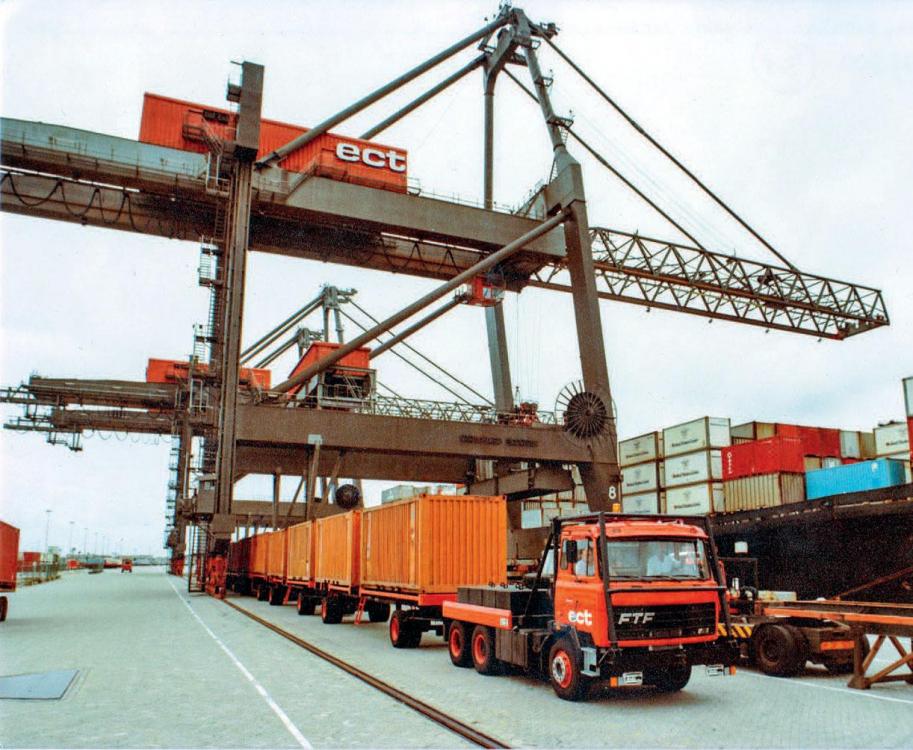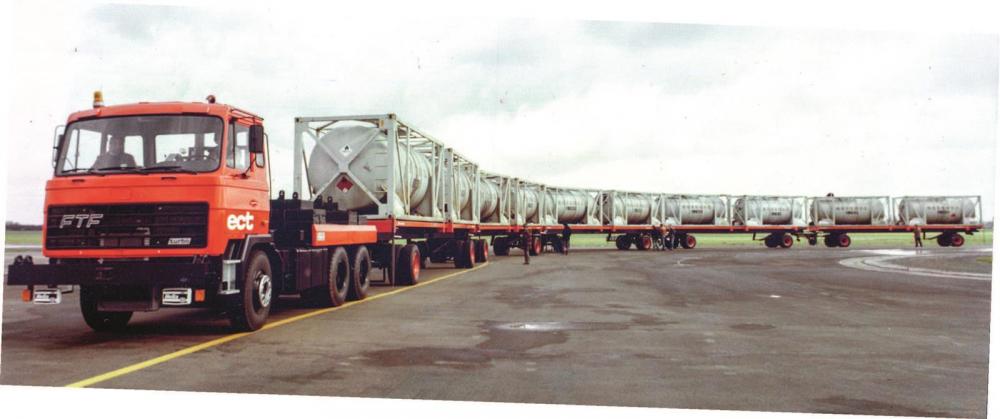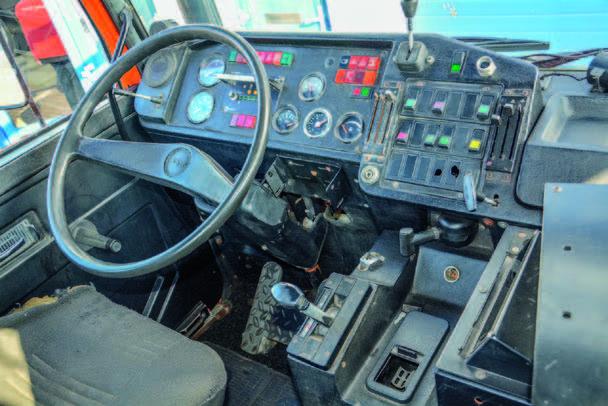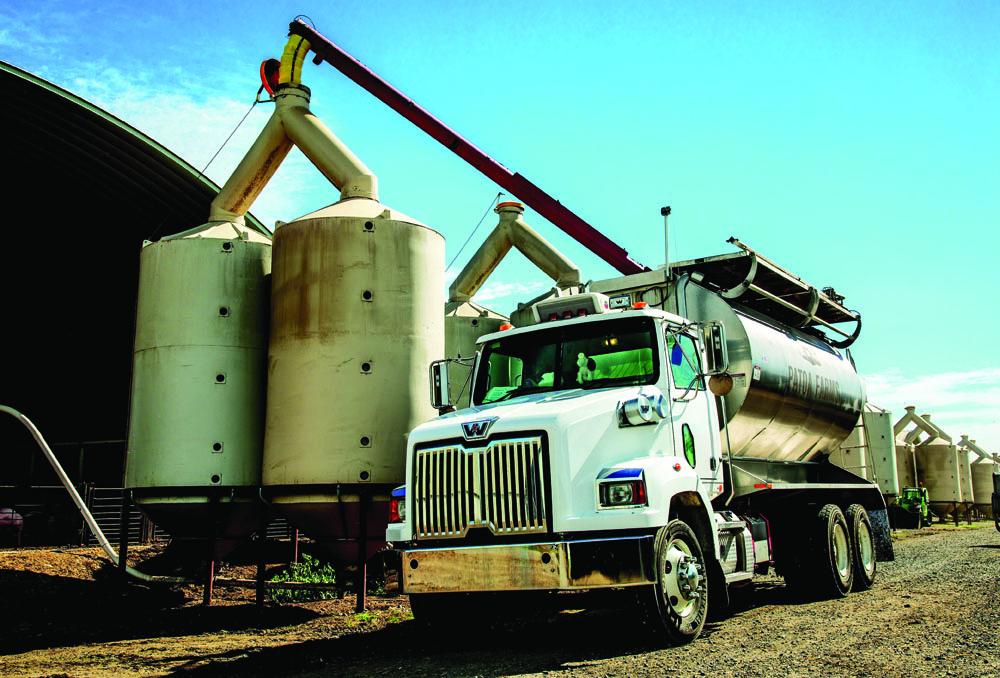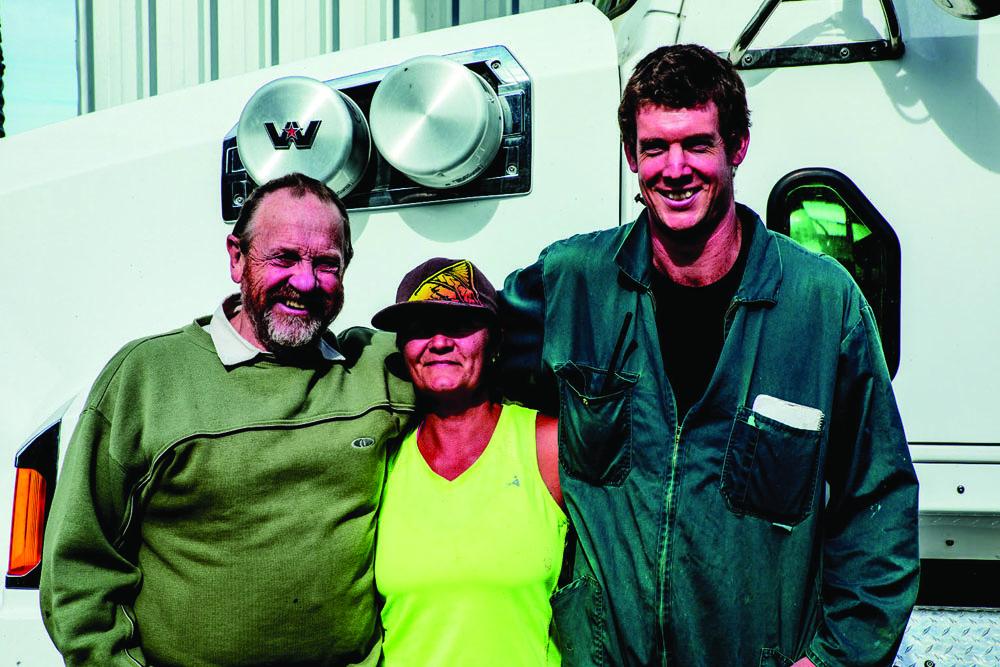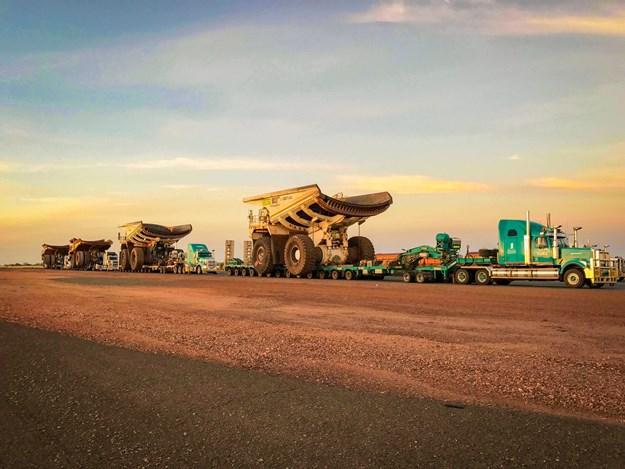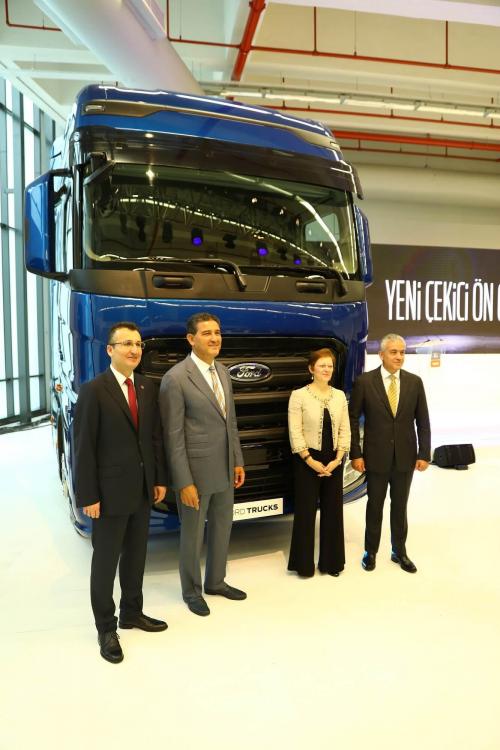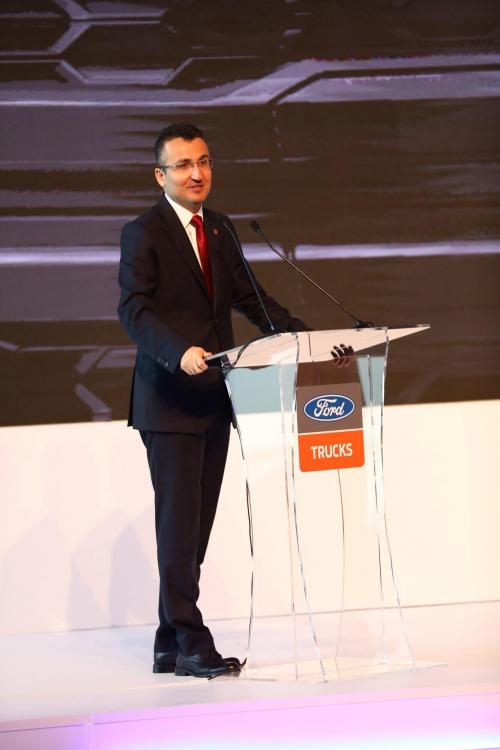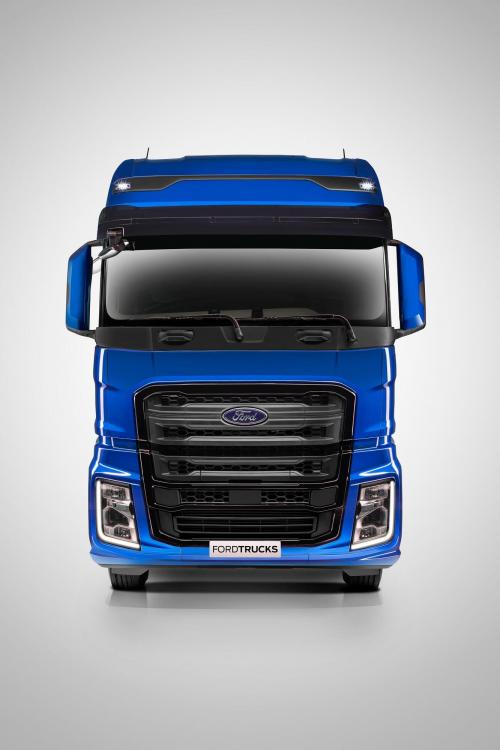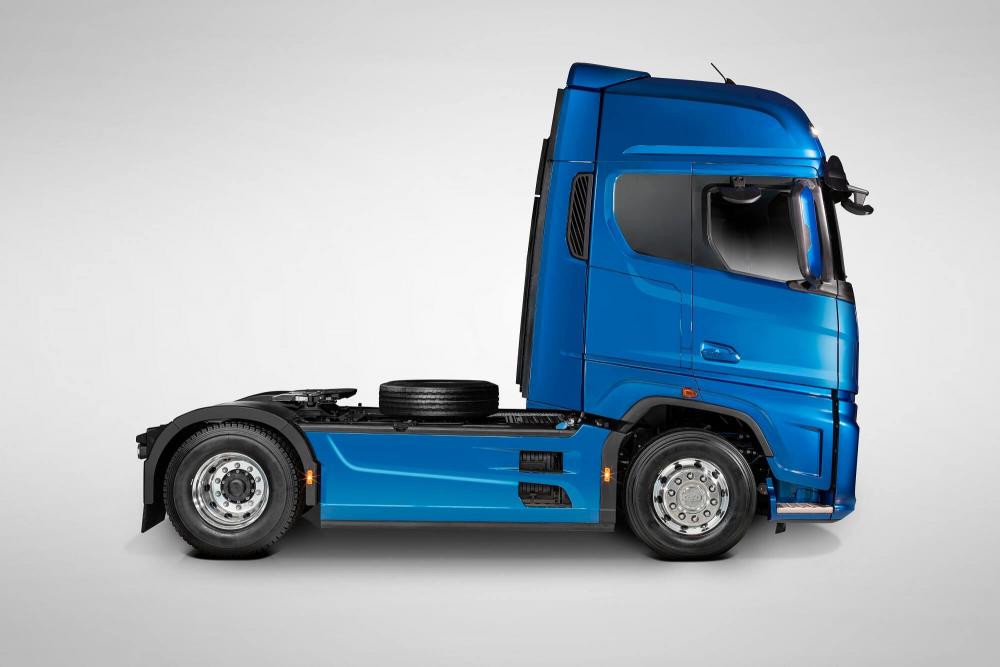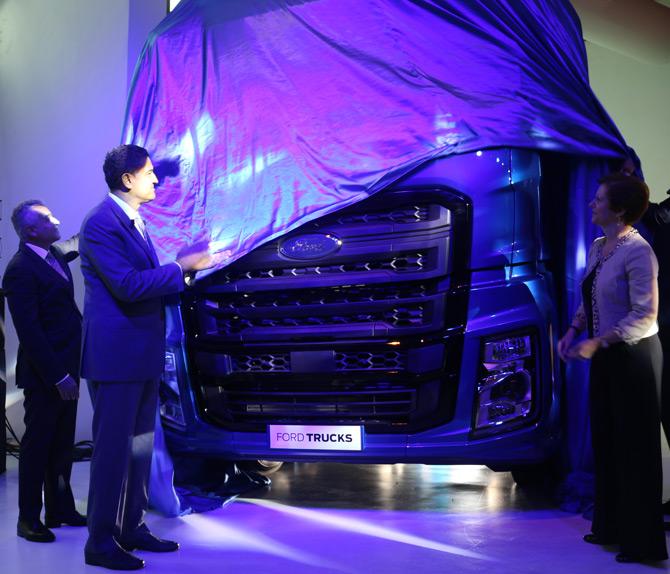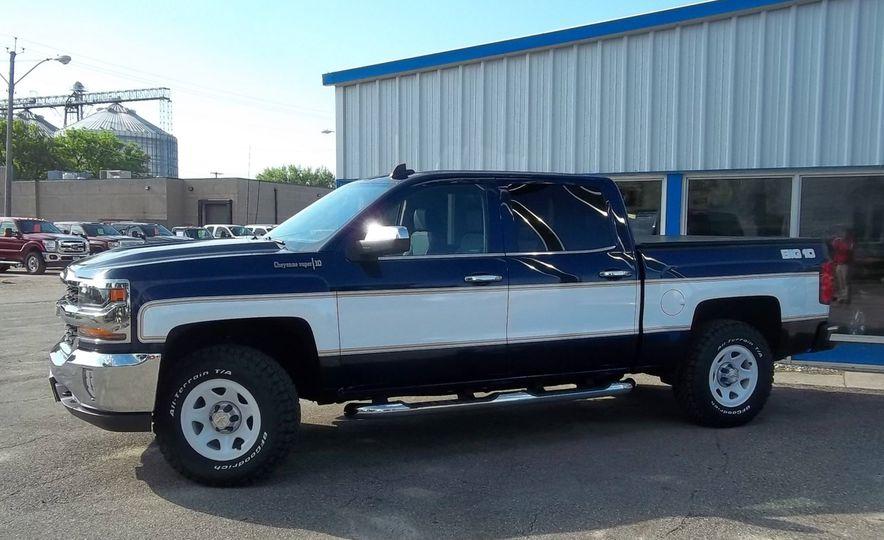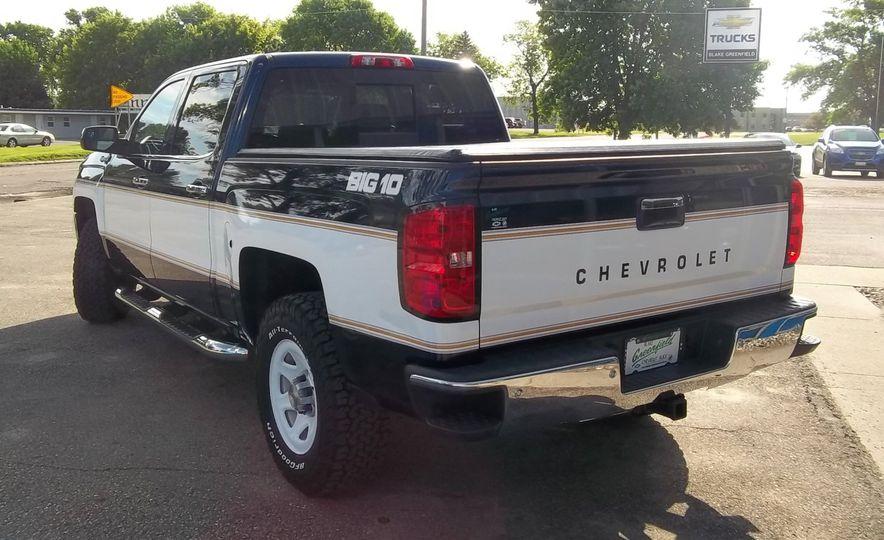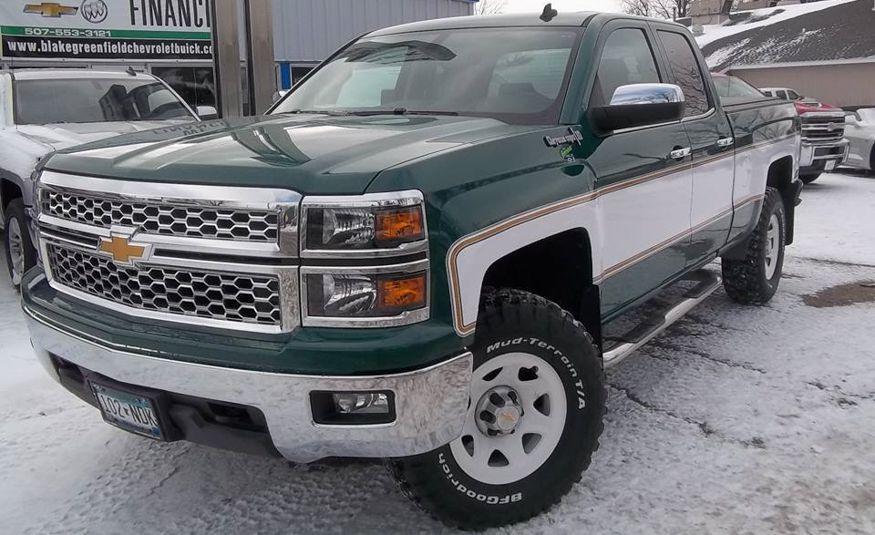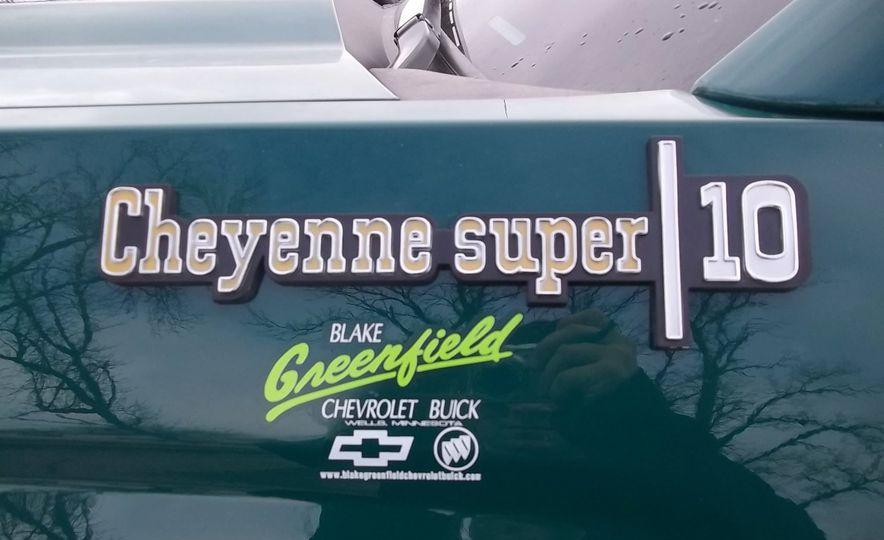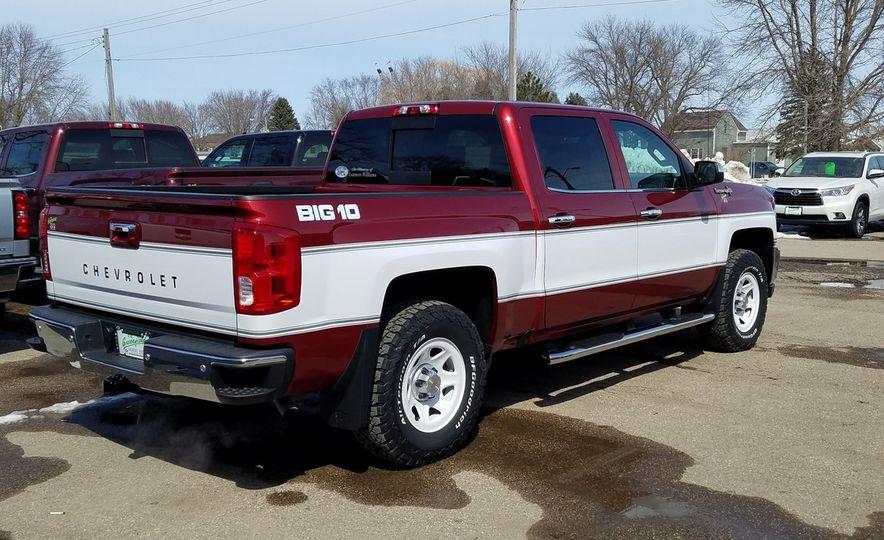
kscarbel2
Moderator-
Posts
18,550 -
Joined
-
Days Won
112
Content Type
Profiles
Forums
Gallery
Events
Blogs
BMT Wiki
Collections
Store
Everything posted by kscarbel2
-
The Dubai Road Express | Legends of Long Haulage
kscarbel2 replied to kscarbel2's topic in Trucking News
-
-
Looking at them from a distance, not in person, I like what I see. If this was a factory effort, there would be no lack of refinement. At the rate in which dealers in the US and Canada are ordering these, one can expect GM to soon grab the reins.
-
Electric Axle for Trucks Saves Up to 15% in Fuel
kscarbel2 replied to kscarbel2's topic in Trucking News
Hyliion Acquires Gentherm’s Battery Division Transport Topics / July 30, 2018 Heavy-duty vehicle supplier Hyliion has acquired the battery division of Gentherm Inc., a move intended to consolidate control of its battery technology supply chain that underpins its 6X4HE hybrid-electric axle. Hyliion was the division’s primary customer prior to the acquisition. Terms were not immediately disclosed. Having proprietary technology is crucial to succeeding in the heavy-duty truck electrified space, Thomas Healy, CEO and founder of the Austin, Texas-based company, told Transport Topics. “It is a battery packaging and software play for us,” he said of the acquisition. “The amount of energy we are trying to store in these batteries and then discharge when you go to accelerate is unbelievable. We can capture over five kilowatt hours of power on some downhills, which is about 20% of the power used in a home per day.” In the Hyliion system — available primarily as an aftermarket item for Classes 7-8 trucks — regenerative braking captures power when the truck is slowing down, then electric power is applied when necessary to keep a diesel engine at its most efficient revolutions per minute. Healy said the hybrid-electric approach for commercial vehicles was not new but now it is “being revitalized.” At the same time, with a hybrid-electric truck it is difficult to figure out how the diesel is performing, Healy said — is it in its efficiency band, is it outside — and then have the system software respond accordingly to supply or capture energy. “We have been able to see over 40,000 charge-discharge cycles out of our system. That is about a 7- to 10-year life out of the product, which is much higher than what we are going to see out of fully electric trucks,” he said. Hyliion has partnered with Toshiba Corp. for its battery cell technology and with Dana Inc. for cooling technology to improve the thermal management of the batteries. “I can guarantee you there is no one else out there who can charge and discharge batteries at the rate we are and have a stable solution. It is pretty remarkable, actually, what the team has been able to accomplish,” Healy said. Meanwhile, there was a strong response to the company’s recent offer to allow fleets to use a Hyliion truck equipped with the 6X4HE, an electric auxiliary power unit and aerodynamic package from FlowBelow Aero Inc. — 70 fleets signed up, he said. “Honestly, that was too many for us to be able to handle. So we shortlisted a group of fleets we have been working with, and we are just at the point of shipping out revenue units now,” Healy said July 27. The hybrid axle can boost fuel efficiency by 15%, the electric APU by 12% and the aerodynamic components by 3%, according to Hyliion. The cost of the system is $25,000, and the payback period is two years for over-the-road trucks, Healy said. On a hybrid-electric longhaul truck, the batteries can weigh 400 to 500 pounds, according to the North American Council for Freight Efficiency. Formula One race cars use regenerative braking as do numerous models of electric and hybrid passenger cars, NACFE reported in its confidence report on hybrid technology. Hyliion in 2015 started with a focus on trailers. Although it has shifted its attention to the tractor, Hyliion sees the trailer application as eventually more suited for international use and some segments in the United States, Healy said. Also, the company has test units with more industrial designs in the hands of operators of tugboats and commercial off-road applications, and high-voltage systems operators, he said. . -
Toyota Explores Heavy Truck Hydrogen Fuel Cell Application
kscarbel2 replied to kscarbel2's topic in Trucking News
Toyota Reveals Latest Version of its Hydrogen Fuel Cell Class 8 Truck Heavy Duty Trucking (HDT) / July 30, 2018 Toyota unveiled the latest version of its Project Portal hydrogen fuel cell electric Class 8 truck, which it said boasts greater range and improvements to versatility and maneuverability. The truck was shown during a media briefing on July 30 at a Center for Automotive Research meeting in Traverse City. Michigan. This Beta iteration of Project Portal expands on the original Alpha version by increasing range from 200 to 300 miles, adding on a sleeper cab, and engineering a unique "fuel cabinet combination" that increases cab space without increasing wheelbase. Power numbers remain the same, with an output of over 670 horsepower and 1,325 lbs.-ft. of torque. “Our goal with the first truck was to see if it could be accomplished, and we did that," said Craig Scott senior manager for Toyota's North American electrified vehicle & technologies office. "This time we're looking at commercial viability.” The Project Portal Alpha vehicle has been operating at the Ports of Long Beach and Los Angeles in Southern California since April 2017, so far logging 10,000 miles of testing and real-world drayage operations. The improved Beta version will begin operating at the same ports in the fall. The truck was developed as a learning exercise for both Toyota and the ports to help develop the zero-emissions Class 8 vehicle for short-range, drayage duty cycles. The truck’s powertrain is based on that of the company’s Mirai fuel cell electric car, which is soldd in limited quantities in the U.S. Toyota noted that it is one of the first hydrogen fuel cell sedans sold commercially. In fact, the Project Portal truck combines two Mirai fuel cell stacks and a 12 kWh battery to power the vehicle. "By evaluating the first truck in our test facilities and on the actual roads in the Los Angeles area, we made a list of improvements for the Beta truck build process and performance enhancements," said Andrew Lund, chief engineer for the project. "We needed to move beyond a proof of concept, which the first truck accomplished, to something that is not only better than the original,but is also more commercially viable." This doubling-down for Toyota on a hydrogen fuel-cell Class 8 truck is part of the company's Environmental Challenge 2050 to eliminate CO2 emissions from its Toyota Logistics facility at the Port of Long Beach. Toyota previously announced the construction of the Tri-Gen facility which will be the first megawatt-sized carbonate fuel cell power generation plant with hydrogen fueling in the world. . The renewable plant will use agricultural waste to generate water, electricity, and hydrogen that will support Toyota Logistics Services' operations at the Port of Long Beach. “We want to help make a difference… a significant difference when it comes to the air quality not only in the LA area but across the U.S. and around the globe,” said Scott. . -
50 years on, McDonald's isn't messing with its Big Mac Associated Press / July 30, 2018 McDonald’s is fighting to hold onto customers as the Big Mac turns 50, but it's not messing with the makings of its most famous burger. The company is celebrating the 1968 national launch of the double-decker sandwich whose ingredients of "two all-beef patties, special sauce, lettuce, cheese, pickles, onions and a sesame seed bun" were seared into American memories by a TV jingle. But the milestone comes as the company reduces its number of U.S. stores. McDonald's said Thursday that customers are visiting less often. Other more trendy burger options are reaching into the heartland. The "Golden Arches" still have a massive global reach, and the McDonald's brand of cheeseburgers, chicken nuggets and french fries remains recognizable around the world. But on its critical home turf, the company is toiling to stay relevant. Kale now appears in salads, fresh has replaced frozen beef patties in Quarter Pounders, and some stores now offer ordering kiosks, food delivery and barista-style cafes. The Big Mac remains unchanged, showing just how much McDonald's and the rest of fast-food have evolved. "Clearly, we've gotten a little more sophisticated in our menu development," McDonald's CEO Steve Easterbrook said in a phone interview. As with many of its popular and long-lasting menu items, the idea for the Big Mac came from a franchisee. In 1967, Michael James "Jim" Delligatti lobbied the company to let him test the burger at his Pittsburgh restaurants. Later, he acknowledged the Big Mac's similarity to a popular sandwich sold by the Big Boy chain. "This wasn't like discovering the light bulb. The bulb was already there. All I did was screw it in the socket," Delligatti said, according to "Behind the Arches." McDonald's agreed to let Delligatti sell the sandwich at a single location, on the condition that he use the company's standard bun. It didn't work. Delligatti tried a bigger sesame seed bun, and the burger soon lifted sales by more than 12 percent. After similar results at more stores, the Big Mac was added to the national menu in 1968. Other ideas from franchisees that hit the big time include the Filet-O-Fish, Egg McMuffin, Apple Pie (once deep-fried but now baked), and the Shamrock Shake. "The company has benefited from the ingenuity of its small business men," wrote Ray Kroc, who transformed the McDonald's into a global franchise, in his book, "Grinding It Out." Franchisees still play an important role, driving the recent switch to fresh from frozen for the beef in Quarter Pounders, Easterbrook says. They also participate in menu development, which in the U.S. has included a series of cooking tweaks intended to improve taste. Messing with a signature menu item can be taboo, but keeping the Big Mac unchanged comes with its own risks. Newer chains such as Shake Shack and Five Guys offer burgers that can make the Big Mac seem outdated. Even White Castle is modernizing, recently adding plant-based "Impossible Burger" sliders at some locations. A McDonald's franchisee fretted in 2016 that only one out of five millennials has tried the Big Mac. The Big Mac had "gotten less relevant," the franchisee wrote in a memo, according to the Wall Street Journal. McDonald's then ran promotions designed to introduce the Big Mac to more people. Those kind of periodic campaigns should help keep the Big Mac relevant for years to come, says Mike Delligatti, the son of the Big Mac inventor, who died last year. "What iconic sandwich do you know that can beat the Big Mac as far as longevity?" said Delligatti, himself a McDonald's franchisee.
-
It would be so easy for Ford to create a conventional cab variant of the H62X. https://www.bigmacktrucks.com/topic/44824-chinese-truckmaker-launches-new-high-end-conventional-us-market-next/?tab=comments#comment-330351 https://product.360che.com/img/c1_s66_b30_s7127_m54990_t0.html
-
If you have time to attend the IAA commercial vehicle show in September and get "hands on", and it really should be on your "bucket list", you'll see just how different each European COE's styling and engineering is.
-
-
No, it's not a Volvo cab. No connection with Volvo. It's an all-new cab, proprietary to Ford. Perhaps the sloped side styling is tricking you. That's actually the norm in side cab architecture nowadays. For one thing, side window visibility is much better. In exchange for having their own variant, Jiangling (JMC) helped pay for its development.
-
Mark, the perfect truck, including the ultimate aerodynamic envelope, would be a cross between a conventional and a COE, and the world's truckmakers including China are converging in their design toward that end. I always preferred COEs owing to the visibility, space and maintenance ease. In other words, I preferred an F-model, Cruise-Liner and certainly Ultra-Liner to an R-model, U-model or Super-Liner. The exceptions were the US and Australian market Value-Liners.....they were special. Had the Ultra-Liner been evolved forward, had Volvo not killed the E9 V-8, well.......then you'd really have something, the North American equivalent of the Scania V-8. The Mack brand, with the E9, would have an entire market segment all to themselves in North America, as Scania now does in the global market.
-
There was a time when Ford Brasil and Ford Otosan (Turkey) were each doing their own thing. But apparently Mulally wanted a more tidy approach. Ford-Otosan, clearly the stronger of the two, was designated the hub for Ford Truck global design. Brazil does sell some small Cargo models unique to their market (the C816 and C1119 use the old cab to reduce cost in that price-sensitive market.....https://www.fordcaminhoes.com.br/cargo/?_ga=1.240094019.1964630396.1468551166). The Brazilian economy is stuck, with no light at the end of the tunnel. Turkey is booming and they're signing up distributors from Morocco to Moscow. And, they scored a big and lucrative technology sale in China with Jiangling (aka JMC). Passionate truck people who work tirelessly are rewarded.
-
I'm always shocked at the negative comments here about the appearance of European COEs, given that the US market was 50 percent COE not that long ago, and none of the COEs of that era were any better looking. As in the US with conventionals, the demand for better and better aerodynamics has dictated exterior European COE design cues to a great degree. But that said, just as I feel the new Ford Cargo has a sharp looking grille and side appearance, Scania, M-B, and MAN all have sharp looking trucks in my book. And Kenworth's K200 is cutting edge Australian design. Yes, as an American, I still like the Argosy and 9800i....love seeing them in South Africa. And the MH Ultra-Liner is written down in my book as the best US COE of all time. But again, I think Ford has a winner. My hat's off to the Ford-Otosan team. If I had a choice between any US conventional sold today and Ford's new COE Cargo, I would climb into the Ford.
-
Tornado is a classic Brazilian pickup (i.e. ute, bakkie), and the only GM Brazil product sold in Mexico. http://www.chevrolet.com.mx/tornado-2018-camioneta-pick-up.html
-
The new "premium" global market heavy tractor.....from Ford Trucks Ford Trucks and You – "Sharing the Load" At Ford Trucks, we’re serious about trucking. It's why we designed the all-new 2019 Cargo heavy truck range from the ground up to meet your needs and expectations. See your authorized Ford heavy truck dealer for details. . .
-
If this was a factory option beginning tomorrow, Chevy truck sales would rise 15-20 percent, AND the jolt would be so much that Ford would have to make a sales marketing response.
-
New Zealand Trucking / July 2018 The Port of Rotterdam is the gateway to continental Europe. From old it has been of great importance to the economy, but the more so since the first container shipments began in the mid-1960s. The method of packing goods in a steel box conquered the world and in 1966 this led to the start of the Europe Container Terminals (ECT) in Rotterdam. In the first year just under 10,000 containers were handled, but three years later that number was already over 100,000. After signing an important contract with Sea-Land in 1988, the huge Delta Terminal was constructed directly on the North Sea shore. By this time a new in-port transportation system was commissioned that consisted of a heavy-duty truck-tractor that pulled a nearly 100-metre long rubber tyred train. ECT called it the Multi Trailer System (MTS) or Trolley System. Because a customary terminal tractor could not handle the 250 to 300 tonnes gross loads, ECT drew up a tender for a custom-built truck-tractor with 6x4 drive and at least a 298kW (400hp) diesel engine coupled to an automatic transmission. In 1979 ECT asked DAF, Mercedes/Titan, and truck and trailer manufacturer Floor to each build a prototype that could be tested in real working conditions as part of their bids for the lucrative order. At the time, the Floor Truck Company had just introduced the Second Generation Motor Panels cab on their FTF chassis. A large number of drawbar skeletal trailers were also needed and the first 4-wheel steer units were developed and built by DAF. Subsequent orders, however, went to Dutch machinery manufacturer Buiscar of Apeldoorn. This firm had a great tradition in the building of carts and trolleys for internal transport. The system that initially was developed for ECT but later also became commercially available, consisted of a train with seven to 10 coupled trailers pulled by a heavy-duty prime mover. All trailers were self-tracking and braking and could be coupled automatically without the driver leaving the cab. The set up was developed primarily to save time, an important focus in container handling. In 1980 Floor received the order to build two trucks to be tested in real working conditions. The 6x4 drive model FD-8.20D1 tractor was equipped with a two-stroke 8V92TA Detroit Diesel with blower and turbo that transferred the power via a 4-stage Allison HT750DRD automatic transmission to a GKN-Kirkstall rear tandem. According to the specification sheet the V8 Detroit turned out 343kW (461hp), but in the case of the ECT tractors this was turned back to 308kW (414 hp), which was done to prevent the FTF losing grip when moving off loaded in wet conditions. Empty the rig was limited to 30kph, and at weights over 150 tonnes to 20kph. Test drives with the very first Multi Trailer Train were staged at Rotterdam Airport. After these trials had proved successful a deal was closed with Floor in 1985 to supply 15 new model FD-8.20D1 truck-tractors for operation at the just-opened Delta Terminal. The FTFs performed so well that three years later a follow-up order was placed for five more vehicles. These did not feature Kirkstall axles at the rear, but Kessler products. Because worldwide containerisation was on the up, between 1991 and 1994 another batch of FTF tractors joined the port fleet. These tractors sported some cosmetic changes such as a new grille. Including the original prototypes, Floor built 40 units for the ECT. All vehicles were fitted with a sturdy ballast box that held two blocks of concrete weighing 14 tonnes total. They also sported a heavy-duty front bumper, a special drawbar coupling, and a strong steel cage above and behind the cab for protection. The word goes that at least one FTF tractor was completely written off when a loaded container fell from a quay crane. Only four of the famous FTFs survived. One is sitting idle in the Port of Abu Dhabi, a second is in the hands of a Belgian truck collector, and the other two form part of the FTF Museum owned by Ton Spaansen in ‘t Zand, the Netherlands. Ton’s interest in the Floor products goes back to 1973 when the family firm bought an FTF truck and trailer to transport sand, bricks, shells and building materials. “At the age of 25 I drove the rig each day to Belgium on a 1000-kilometre return trip hauling mine stone,” says 71-yearold Ton. “I just loved it! Notably the sound of the screaming V8 Detroit when it had to tackle a hill made a big impression on me. Three years later we bought another FTF tandem truck, but because I was asked to fill a different role in the business my family not long after decided to sell it again. Some 19 years later I ran by chance into this very truck and I bought it right back. This was also the start of my hobby, restoring old commercial vehicles. Some years later my wife Ans and I founded the FTF Club, and in 2006 the FTF Museum.’’ The real eye-catchers in the museum are the two ex-ECT tractors and a huge FTF off-highway dump truck that once operated at a nearby steel mill. “It was not easy to obtain these rare beasts,’’ says Ton. “Both companies are world players and all communications with them go over many desks. And you need some luck too. In 2003 we heard that the ECT wanted to do away with nearly all their container tractors and we were lucky to get unit number 940. This was not only the last tractor that the ECT had purchased from Floor, but also the last FTF built before the truck maker shut its doors for good in 1994.’’ This truck is shown in the museum ‘as found’. W hen ECT’s last working FTF (unit number 936) was put out of service in 2008, the museum managed to obtain this too. In recent years it was refurbished in part by Ton with the help of mechanic Klaas Poutsma, although some panel work to the ballast box, as well as sandblasting and spraying the complete vehicle, was contracted to a professional body shop. The intention is to take the rare FTF also out to classic truck meets, but this is easier said than done with a top speed of only 30 kph. After the FTF era ECT turned to Belgian specialist truck and trailer manufacturer MOL Cy in Hooglede. MOL was well known as a producer of terminal and ro-ro (roll-on roll-off ) tractors. When the ECT asked them to develop a completely new multi-trailer tractor they came up with the 4x4 drive TG280. This purpose-built vehicle was equipped with a (320kW) 430hp 6-cylinder 12.6-litre DAF diesel engine that was coupled to an Allison HD4060 automatic transmission and a Steyr VG 2001 transfer box. Axles were Kessler with front and rear capacities of 16 and 25 tonnes respectively. The F230 cab was also sourced from DAF. Later versions of this sturdy compact worker have a Renault or Iveco cab fitted and engine options are now Cummins, Iveco, and Volvo diesels. The full automatic trailer coupling is retained in the MOL TG280 tractors. ECT bought several dozen of these terminal tractors that can pull container trains of up to seven trailers with a maximum gross weight of 350 tonnes. But no matter how good they are, the MOL tractors cannot match the sound that a screaming V8 Detroit makes under full power! .
-
- 1
-

-
Deep in the North Canterbury forest lurks New Zealand’s most unique Western Star. Never seen or heard, it’s gleaming, new, and just happens to be the pride and joy of not just its owners, but also New Zealand’s most hidden away lady trucker. New Zealand Trucking / July 2018 If you stumbled across Patoa Farms by mistake on a tramp or something, you’d be forgiven for thinking you’d slipped through a wormhole in space and been instantly transported to Iowa, Dakota, or somewhere like that. Confronted with a Dodge Ram truck fitted with a stock feed body, or a gleaming new Western Star 4700 6x4, also equipped with a feed bin, it wouldn’t be until Jax Clarke, driver of the Western Star, pulled up, jumped out, and said, “Ya right there mate?” that you’d realise you were still in Aotearoa. Patoa Farms in Hawarden, North Canterbury is a huge operation by any measure, one of the largest free-farm piggeries in the Southern Hemisphere, proudly flying the banner ‘Our little piggies roam free’. Readers will remember the story we ran on one of the region’s earliest 58 tonne HPMV units, a Scania R620 owned and operated by R J Baker in Rangiora whose sole purpose was carting food to the farm’s 40,000 inhabitants (ref Jan/Feb 2017 issue). Patoa is a best practice operation that ’s used as a model in how best to treat Porky and Priscilla Pig en route to their inevitable destiny. Life is life, and pork, like beef, mutton, chicken, and fish, doesn’t grow on trees, it has to be farmed – but that can be done with dignity and respect for those upwardly supplying the mammalian food chain. The farm is owned and run by the Sterne family with co-founder Steve Sterne and his daughter Holly at the reins on a daily basis. They ’re immensely proud of their farm, both what they ’ve achieved, and how they ’ve achieved it. Even here in New Zealand Holly recalls the ‘delightful’ offspring of local farming aristocracy teasing her about being a pig farmer. However, the ‘shoof ’s’ most certainly on the other foot now. Anyone who knows anything about pig farming knows that once a year the go-to place is the International Hog Fair in Des Moines, Iowa. “It has to be seen to be believed,” said Steve. “If it ’s to do with a pig, it’s there.” Pig farms need trucks, and because Steve knew little about trucks and trucking in New Zealand, he took his leads from experts in the States. That ’s pretty much how a left hook Dodge Ram feed truck ended up in Hawarden. To us on the outside a Dodge Ram feed truck is likely to induce drool. To Steve it’s a feed wagon. Albeit a pretty cool one. Understandably the Dodge got to the stage where it was not up to the demand the curly-tailed customers in the lodges were imposing on it. Patoa needed something bigger. So, at the Des Moines Hog Fair in 2015 Steve was introduced to a Western Star truck sporting the ‘Rolls-Royce’ Sudenga feed bin. Now this was it, the real deal. So he commenced the journey to get one back to Patoa. That, as it turns out, was easier said than done. In the course of daily operations, being left or right-hand drive is of no consequence, but trying to communicate metric chassis and body measurements with imperial US suppliers, border controls, and ensuring a myriad of other compliance requirements were met proved harder than herding a piglet on an icy morning in Red Bands. So, the Western Star folks stateside did some digging and pointed Steve at Heavy Trucks Ltd in Christchurch, home of Western Star in the region, and at that point truck sales manager Glenn Heybourn entered the fray. Steve was surprised Western Star was so well represented in New Zealand and Glenn couldn’t believe his ears when Steve arrived and said, ‘I’m trying to get one of these, can you help?’ “ The team at Heavy Trucks have been absolutely great to deal with the whole way,” said Steve. “ They know their stuff inside out.” And as for Glenn, well every truck sales person loves that surprise, quirky, left-field job from a customer who walks in cold and is the real deal. Something that requires research, tweaking and fine-tuning. Glenn commenced the job as the truck guy in New Zealand who knew what it was the customer wanted and was able to chew a bit of jerky and communicate that to the ‘ole boys in the US. “ The whole project was really fascinating,” says Glenn. “ There were so many things we looked at and thought ‘we can improve that ’. The Americans did a lot manually from the outside; we got them to bring it inside, automating the control of things on the body from inside the cab. A good example is the lids on the bin. We had them split them so Jax could load half in the rain while keeping the other half shut. Cameras were another thing. We put cameras on the unit so Jax could keep an eye on everything and make tasks like positioning the auger much easier. Everyone here loved the project and the truck that resulted. We’re very proud of it.” With the build and fit up completed, the truck was brought home to Patoa. The Western Star itself was specced to suit the hot, freezing, dusty, muddy, world of the farm. It’s a tough place for a truck, with extremes of conditions and an almost constant wind. The end product was a right-hand drive 6x4 Western Star 4700 with a Cummins ISL 8.9-litre e5 SCR Euro 5 motor producing 264kW (355hp) at 2100rpm and 1599Nm (1180lb/ ft) of torque at 1200rpm. Behind that is an Allison 3000 RDS 6-speed automatic transmission with a PTO. Front axle is a Meritor FG-941 on parabolic taper leaf springs with shocks. Out back are Meritor MT 40-140XGP tandem axles with diff-lock rated at 40,000lb, on AirLiner air suspension. The truck’s on steel 10-stud wheels (giving it such a cool US flavour) with 295/80R 22.5 tyres. But let ’s put the brakes on for a bit. Before we continue, we’ll take a look at what Jax and her Western Star do, just to put other spec related things into context. Firstly, it’s worth remembering the wind is relentless, the dust constant, the fragrance unique, and the noise omnipresent. Jax drives under a row of eight feed silos with loading booms. The truck can load from four silos at a time and she can put different mixes in each of the truck’s sealed compartments, according to her order list. Her customers’ ages determine the banquet they get. Once loaded – about 14 tonne payload – she’s off, stopping at the feed silo next to each lodge on the delivery run. She can position and operate the truck’s auger from in the cab or remotely from outside, and she’s an expert at dropping the sock into the hole at the top of the silo. Once in, it ’s a matter of engaging the auger and unloading. With all the deliveries done and having wound her way around the various drop sites, it’s back to the loading silos and the process starts again. Total distance travelled? Anywhere from 500m to 1.5km. Customer satisfaction? By the sound of the squeals, extreme. It’s like a metro dial-a -pizza run in a town populated entirely by Warner Brothers’ finest. Now that we have that information under our belts, let ’s get back to the truck. There’s no number plate, RUC holder or COF (although maintenance on the dot because this is a mission critical part of the business). The engine has extra dust combating capabilities. That includes air intakes on the side of the bonnet, pre-cleaners and a safety element on the hefty under-hood Donaldson air cleaner, as well as an engine fan that runs in reverse for a minute or two every time the truck starts in order to blow gunk out of the radiator. There’s no cruise control and no traction control; there’s no need; top speed would rarely exceed 40km/h, and the central lodges at Patoa are on flat-as-a -pancake ground. There’s a Denso extreme duty air conditioner on the roof so the cab can be kept shut as much as possible. So, does Jax like her Western Star feed truck? “Hell yes! This is cool.” The inside is a credit to her considering the world she operates in, and she keeps on top of things with a quick brush and wipe after every load. Inside it’s all Western Star and if you’re going to be doing a job like this then providing kit that makes the operator’s eyes light up each time she sees it is a good business decision on any level. Jax has been at the farm for three years and although the feed truck is her number one role, she has other responsibilities and works closely with operations manager Rob Reynolds. She knows the whole feed operation inside out, where the stopping points are and all the subtle stuff that makes it appear deceptively easy. Just looking you know it would take you half a day to do a run she’s nailed in about 45 minutes. Riding on board it’s also instantly apparent what the Western Star brings to the operation. This is a typical tuff Western Star, little troubled by the job requirements. Accelerating rapidly, stops and starts, it could do this forever...which is just as well, it probably will be, although Glenn said the truck’s been specified to be useful outside the farm in the unlikely event it finds itself in the big wide world. The Allison was the perfect solution gearbox wise, it’s not a job you’d ever want to be changing gears in, nor putting up with the fussiness of an AMT. Jax is no slug operating the package either; she certainly has the truck’s measure. Already it’s an extension of herself as she wheels it around the lodges with consummate ease, managing the entire process from a central console inside the cab, able to communicate with Rob via radio telephone. “ You get some interesting looks from others when you tell them what you do and what you drive. This is my baby and I love her. She makes the job so easy.” So there you have it. The Patoa Farms Western Star 4700, hidden deep in the forests of North Canterbury. Arguably New Zealand’s coolest little trucking secret, in the hands of the amazing Jax Clarke – a proud and passionate lady trucker. .
-
- 2
-

-
Sixty years of top-shelf Australian trailers
kscarbel2 replied to kscarbel2's topic in Trucking News
-
Sam Drake reflects on Drake Group's storied past and bright future Australasian Transport News (ATN) / July 27, 2018 Iconic Australian trailer manufacturer, Drake Group, hits the big 6-0 this year and we sat down with third generation worker in the family business Sam Drake to find out how it all began and where it’s headed. Back in 1958, when a couple hundred horsepower was a big deal and trailers had a fraction of the payload they do today, an engineer by the name of Colin Drake set out to change the game. After starting a trailer repair business in Brisbane it didn’t take long for Colin to realise there was a need in the market for well-built Australian trailers, particularly low loaders. "He very quickly began manufacturing flat tops and drop decks," explains Drake Group business development manager Sam Drake, who is also Colin’s grandson representing the third generation of the family in the company. "At the time, there weren’t very many Australian manufacturers producing low loaders, so he started producing different models to address a gap in the market and that’s where it all started." For Colin, it wasn’t just about making the same old trailers already available down under, he wanted to innovate and build the best. "Some manufacturers were making lighter-duty low loaders, but we took it to the next level," Sam says. This led Colin to developing the Swingwing widening low loader which was launched in 1969 and has continued to evolve since its debut 50 years ago. "When the company started producing the Swingwing and full widener trailers, it was clear that my grandfather had created some models that were revolutionising the way equipment was moved in Australia," Sam says. "The Swingwing was the biggest game changer for the industry. There wasn’t anything like it available at that time. No one was building a trailer like it." Over the past 60 years, the Drake Group has continued to grow within the Australian trailer space, acquiring O’Phee Trailers in 2015 and constantly expanding its range, something Sam attributes to the quality and innovative design of the products. "The key to our success has been through maintaining quality in our products, but also innovating with design," he says. "We’ve always prided ourselves on quality and innovation and as a result that’s what our reputation has become out in industry." A strong customer focus has always given Drake an edge which is something Sam says allows them to introduce the right products that operators need and want. "Listening to our customers is a massive part of what we do, and then translating that into creating better models and transport solutions," he says. As a third generation member of the business, Sam proudly tells Owner//Driver the feeling of seeing a trailer roll off the production line never gets old. "I’m third generation family member here, as well as my sister Maggie, and it’s a fantastic thing to be a part of," he says. "Every single drake trailer that rolls out the gate is a proud moment for me because every single one is out there on the roads putting drake on the map." Although trailers have come a long way since Colin Drake’s early work building them, Sam believes the vision his grandfather had back in 1958 is still alive and well within the company. "There is a lot of the original DNA still there," he says. "The fundamentals of what my grandfather set out to achieve were really about building top shelf equipment and providing the best transport solutions for our customers. "Being the best in the business is what we want to do and it’s in every detail; whether it’s the paint, the steel, the design, every little detail is so important and that’s what makes our product what it is today." To celebrate the Drake 60th Anniversary the Group is hosting an open day at the Wacol facility on Saturday September 15 from 9am-1pm, with factory tours, truck and trailer displays, competitions and food and drinks! .
-
Ford Trucks Press Release / July 27, 2018 Our "heavy" trademark, Ford Trucks, held a ceremony at our global commercial truck R&D center in Istanbul, Turkey, where we developed an all-new tractor specifically designed to be the new leader in international long-haul transport. Over a five-year period, some 1,200 Ford Otosan engineers went to work creating a cutting edge new heavy truck capable of meeting and exceeding the demands and expectations of both Turkish and global market customers. Ford Trucks' new heavy truck delivers high performance with a 13-litre 500 horsepower engine, while the 2.5-meter wide cabin width and advanced technologies focused on providing the comfort of home to long-haul operators, features that will redefine the standards in the premium heavy truck segment. The official launch of the new truck will take place at the international IAA commercial vehicle show in Hanover, Germany in September. "Our engineering and production capability is our strength to stand out in the global competition", said Ford Otosan General Manager Heydar Yenigün. "In 2010, Ford Trucks took its first step in returning to the world stage with a true global market heavy truck platform", said Yenigün. "In Turkey, the Ford Truck brand completed the establishment of a world class dealer network. At the same time, we began establishing and strengthening the Ford Trucks brand in international markets. In addition to the Middle East, Africa, and Turkey, we continued our growth with the opening of dealers in Eastern Europe. Today, Ford Trucks is operating in 40 countries around the world, with that number rising to 50 countries by the end of 2020." Ford Trucks' global growth strategy and competitiveness, our willingness to continuously invest in cutting edge R&D and production capabilities enables us to stand out from the competition. Proprietary design is one of our strengths. With the new Ford Cargo, Ford component content has reached 89 percent. Ford Otosan's proprietary 13-litre "Ecotorq" powertrain, developed in 2016 at a cost of US$100 million, reflects Ford Trucks competence to move to the next level. Our new "big block" Ecotorq engine is already gaining the appreciation of customers in Europe with its impressive performance and low fuel consumption. The truck's drive axle, which entered production in 2015, was developed by Ford Trucks engineers. This year at a cost of $57.8 million, Ford Trucks began development of a proprietary automated manual transmission (AMT). Development is scheduled for completion in 2019, allowing us to use our own transmissions from 2020. With our own proprietary transmission, our Ford Trucks content rate will rise even further. We have not only invested in new product, but also in our testing and production facilities. Ford Trucks opened a European level heavy truck test center adjacent to our Inönü, Turkey plant. Now, most testing previously done in Europe can now be carried out in our own facilities. We have also upgraded our paint shop with the latest technologies, at a cost of US$17.5 million. In addition, we improved production efficiency with a new cab production line utilizing the latest global manufacturing processes. "In the long haul segment, Ford Trucks has been a proven leader for decades", said Yenigün, saying: "Our continuous product and plant investments have rewarded us with a leadership position. With the launch of the 2016 model year, our redesigned series of vocational trucks became indispensable in Turkey's rising construction sector. From the largest projects to the toughest construction site conditions, we have become the truck of choice throughout Turkey with a 39 percent market share" In the Turkish domestic truck market, our overall market share has reached an all-time high of 17 percent, and that number continues to rise. Ford Trucks goal is to become a global leader in both the long-haul and vocational segments. In September, we will introduce our new heavy truck range to the world at the Hanover international IAA commercial vehicle show in Germany, which reflects the depth of our international growth strategy. We have launched more than 60 dealers and service points in Russia, Africa, the Middle East and Europe in preparation for our new heavy truck launch. Our slogan, “Ford Trucks and You – Sharing the Load", sends a clear message to our customers that we understand their needs and work demands. Ford Cargo launched in Turkey among seven European brands. Today, Ford Trucks aims to become a so-called European brand with an all-new world class product. Ford Trucks Deputy general manager Serhan Turfan said the new Ford Cargo is all about comfort, efficiency and technology. "We have reimagined every detail. Our new truck is a success with the strength and performance of tests in very demanding climatic and terrain conditions. The modern design language, based on prestige and power of our new tractor, offers a combination of professionalism and innovation. Comfort, efficiency and technology are the most important features of our product. Our new cabin, reaching 2.5 meters wide, promises users the comfort and freshness they need on a long road. With its 500 horsepower engine, our new heavy truck brings new levels of efficiency to the transport industry. The appeal of Ford Trucks, our ability to deliver improved fuel economy, and lower maintenance costs and operating expenses, will greatly reduce the cost of ownership. And importantly, we focused on future technologies. With "ConnecTruck", we enable customers to integrate their tools, customers and the entire outside world. With map-assisted speed control, multimedia system, and new technologies supporting both driver convenience and fleet managers, Ford Trucks will be viewed as an optimized product for maximum profitability." .
-
Davey Johnson, Car & Driver / July 27, 2018 When Blake Greenfield took a green, 70,000-mile, 2014 Silverado in trade at his small Chevrolet dealership in Wells, Minnesota, his salesmen razzed him that the truck would be tough to move. The color wasn’t particularly desirable in the area surrounding the town of fewer than 2500 residents, and Greenfield figured they were right. Then he thought of two things: his own surname, and a 1973 Chevy truck that his father had owned when Blake was a kid growing up in Iowa. The first part was simple. “In all of our advertising,” explains Greenfield, “we try to use the color green.” The second part, inspired by his dad’s old red-and-white pickup, took a little more know-how and imagination. His cousin Ray owns a vinyl shop and wound up spending hours looking at trucks, taking measurements from photos of old two-tone “Squarebody” C/K Chevy pickups of the ’70s and ’80s, and figuring out how the classic scheme might apply to a modern Silverado. To go along with Ray’s design handiwork, Greenfield and his crew added a lift kit, sourced some wagon-style wheels that’d evoke the period in question, tacked on Cheyenne Super 10 and Big 10 labels like those worn by the Big 10 special-edition Chevy pickup of the late 1970s, and added chrome door handles and mirror caps. But they still weren’t entirely sure what the finished product was going to look like until the truck rolled out of Ray’s workshop back in December of last year with the vinyl applied to the truck’s flanks. Everyone at Blake Greenfield Chevrolet Buick loved the truck, and Greenfield figured it’d make him stand out around town and perhaps attract some business into his store. It turned out to be a little more than that. When photos taken by a local found their way onto the internet, Greenfield’s phone began ringing. The friendly Midwesterner still seems taken aback by the reaction. “It seemed like it went viral almost overnight. We had calls from all over the U.S.” Since then, trucks—done both with vinyl applique and actual two-tone paint jobs—have gone out to far-flung locations such as Texas (naturally), New York, Pennsylvania, Ohio, Michigan, and Arkansas. Two Silverados currently undergoing the conversion are both destined to stay home in Minnesota, though. Greenfield is pretty sure they’re the twelfth and thirteenth examples to be built since the calls began. And just in case you’d care to purchase the very pickup that started the minor furor, Greenfield notes that his 2014 is up for sale, although he admits he isn’t sure he should part with it. If you’d like to commission your own, both his Wells location and his other dealership, Spring Valley Chevrolet Buick, not far from Rochester, Minnesota, are both happy to take your order. We’ll have ours in Colt Seavers–spec brown and gold, thank you very much. .
-
Why did Ford allow their trademark hold on the name "Courier" to lapse in the first place?
BigMackTrucks.com
BigMackTrucks.com is a support forum for antique, classic and modern Mack Trucks! The forum is owned and maintained by Watt's Truck Center, Inc. an independent, full service Mack dealer. The forums are not affiliated with Mack Trucks, Inc.
Our Vendors and Advertisers
Thank you for your support!


